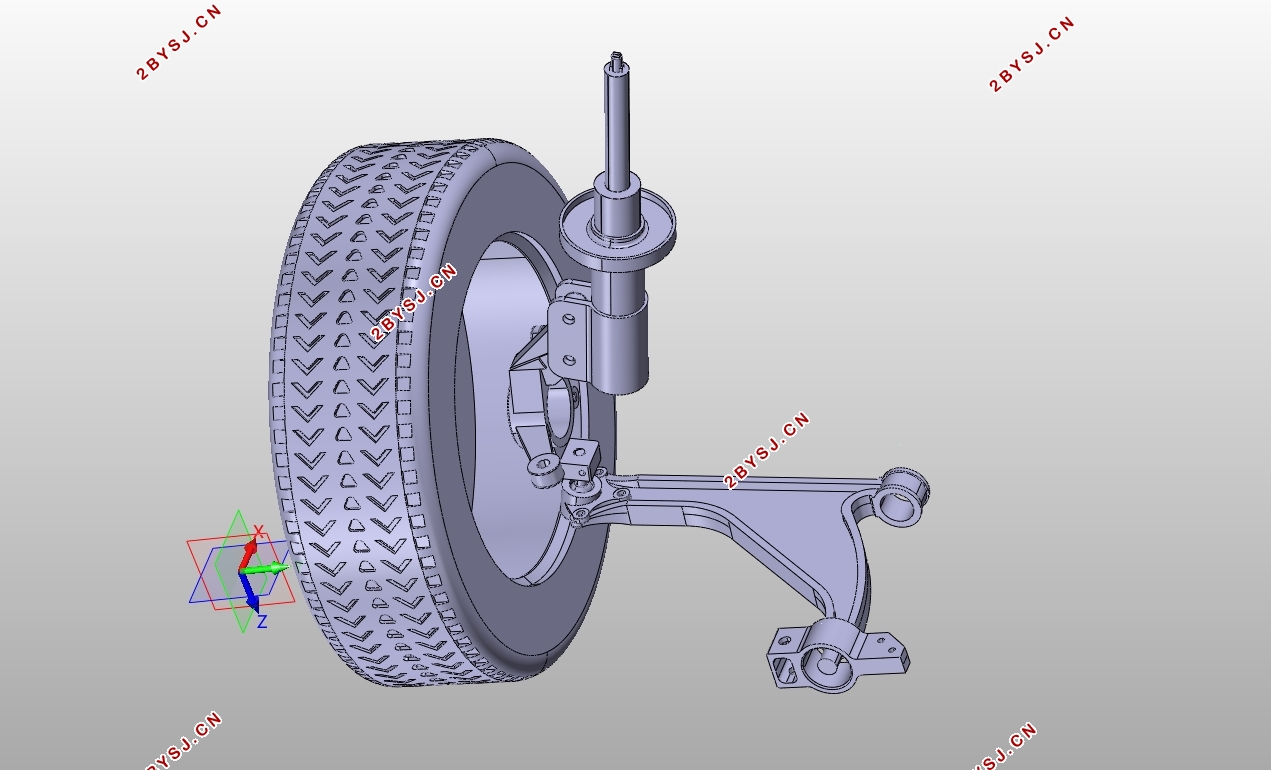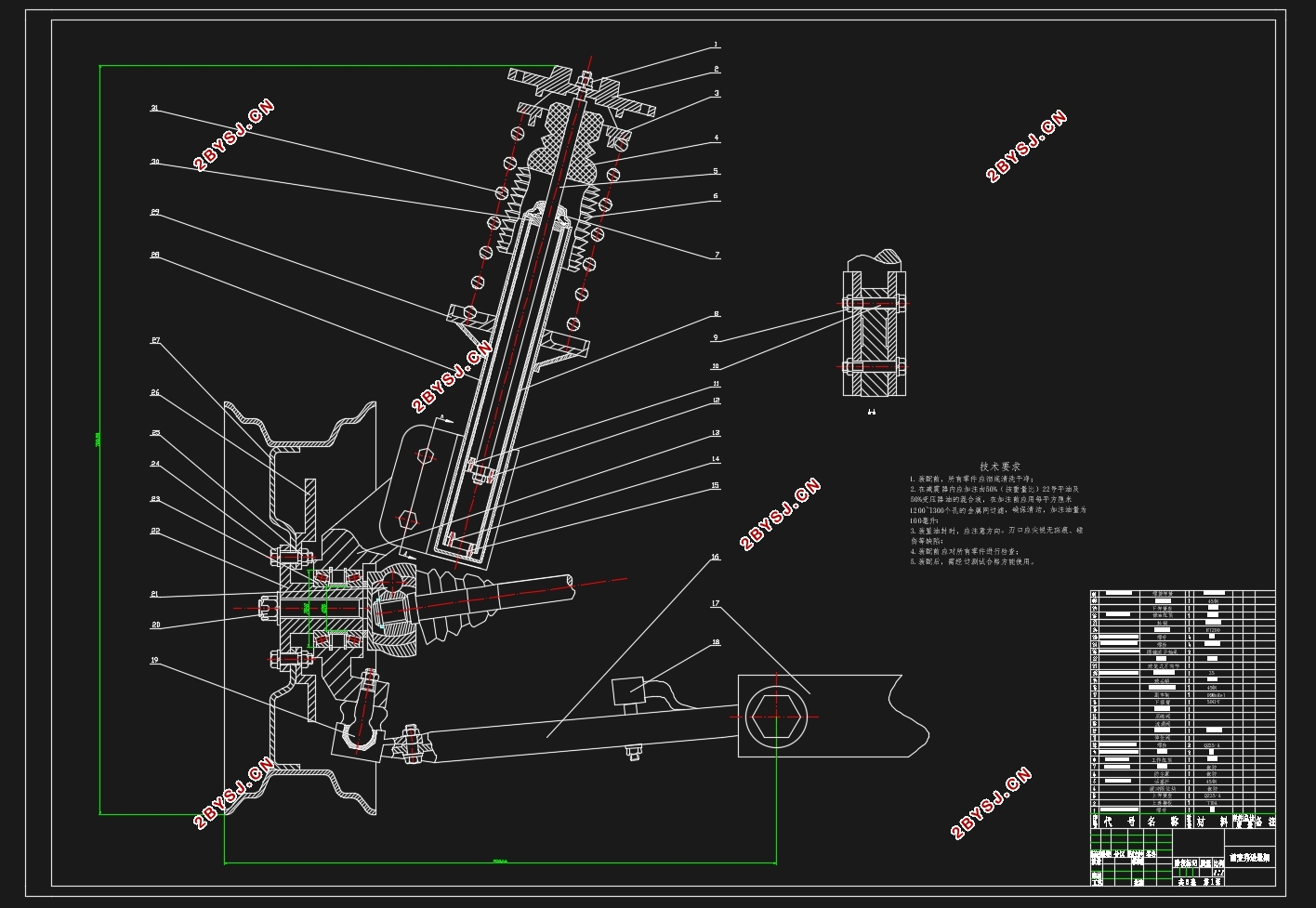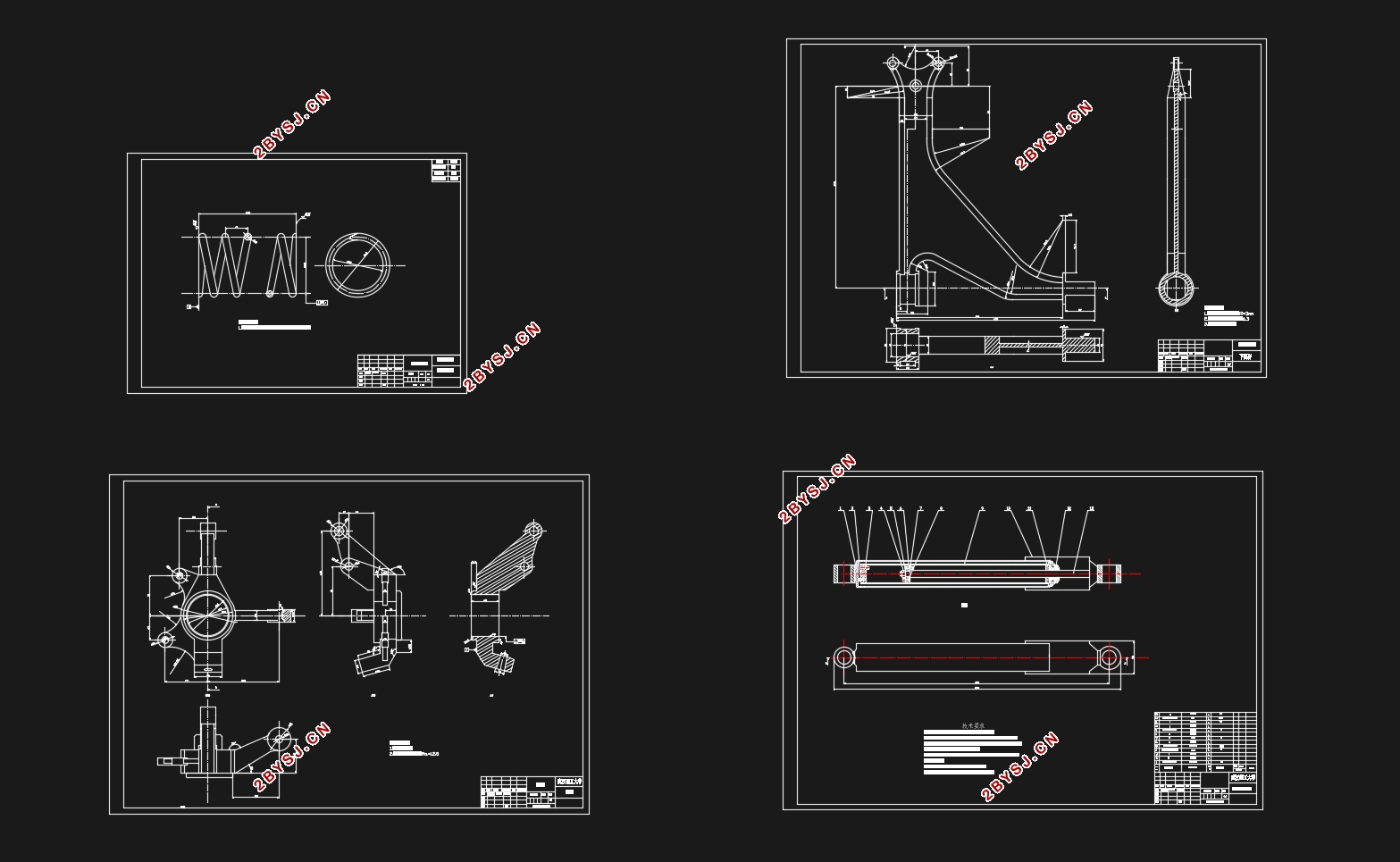纯电动SUV悬架设计及运动学分析(含CAD零件图装配图,CATIA三维)
无需注册登录,支付后按照提示操作即可获取该资料.
纯电动SUV悬架设计及运动学分析(含CAD零件图装配图,CATIA三维)(任务书,开题报告,外文翻译,论文说明书11200字,CAD图5张,CATIA三维图)
摘要
悬架在结构上用于连接车身(或车架)与车轮(或车轴),是汽车的一个重要部件集成,负责车轮与车架之间的所有力和力矩的传递,能缓和不平路面带来的冲击,并且能衰减振动,保证车辆行驶平稳、乘客乘坐舒适。悬架传递特性的好坏直接影响汽车平顺性和操纵稳定性,悬架性能优化了,汽车的整车性能也就改善了。
本次主要对纯电动SUV的悬架系统进行设计,并进行分析。首先对悬架类型及特性进行了了解,并对前后悬架总体方案进行设计;其次对悬架关键部件(弹性元件、减振器等)设计计算,并进行校核;最后运用Catia进行实体建模并用动力学分析软件Adams对悬架系统进行运动分析。
关键词:悬架;麦弗逊;扭转梁;计算机仿真
Abstract
Suspension used to connect the body (or frame) and the wheel (or axle) on the structure.It is an important assembly of the car which is responsible for transmiting the power and torque between the wheel and the frame.It can ease the impact of uneven road, decay vibration, and ensure drive smoothy and comfortable of passengers. Suspension transmission characteristics directly affect the car ride comfort and handling stability.Suspension performance is optimized, then the performance of the vehicle improved.
The design is mainly for suspension system of eccentrical motor driven SUV, Improving the performanceby analysis of optimization.First of all, try to understand the type and characteristics of the suspension,then to design the front and rear suspension.Secondly,Designe and calculate the key components of the suspension such as spring,struct and so on.Finally, Use catia to model the suspension system and analyze it with simulation software.
Key Words: suspension; mcpherson; twisted beam; computer simulation
悬架的总体方案要求
本次设计的对象为纯电动SUV,产品的定位是小型、紧凑型SUV。具体的总体尺寸参数要求如表3.1。
表3.1 悬架总体尺寸参数
纯电动SUV 5门5座小型
长*宽*高 4300*1750*1600mm
整备/满载质量 1400/1850kg
前/后轮胎 205/60 R16
轴距 2600mm
前/后轮距 1500mm








目录
第1章 绪 论 1
1.1课题研究的意义与背景 1
1.2悬架的发展历史和现状 1
1.3悬架的发展趋势 2
1.4课题的主要研究内容和目的 3
第2章 悬架结构分析 4
2.1悬架类型 4
2.2独立悬架的类型分析 5
第3章 悬架参数计算 7
3.1悬架的总体方案要求 7
3.2悬架主要性能参数 7
3.2.1悬架偏频与静挠度 7
3.2.2悬架动挠度 8
3.2.3悬架的工作行程与弹性特性 8
3.2.4悬架侧倾角刚度在前后轴分配 9
第4章 悬架零件设计 10
4.1弹性元件设计 10
4.1.1螺旋弹簧的选择 10
4.1.2结构参数设计 11
4.1.3弹簧参数校核 11
4.2减振器设计 12
4.2.1减振器介绍 12
4.2.2减振器主要性能参数 12
4.2.3主要尺寸参数确定 15
4.3导向机构设计 16
4.3.1导向机构布置参数 16
4.3.2导向机构受力分析 18
第5章 后悬架其他设计 19
5.1扭转梁的布置 19
5.2拖拽臂 19
5.3橡胶衬套 20
第6章 三维建模与仿真分析 21
6.1CATIA介绍 21
6.2零件模型建立 21
6.3悬架总成装配 22
6.4基于ADAMS的运动仿真 23
参考文献 28
致谢 29
